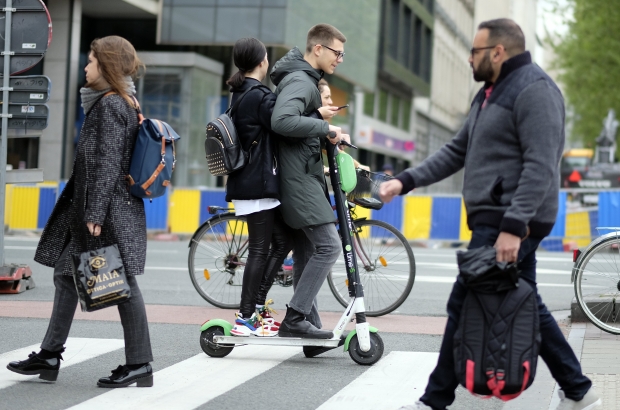- Daily & Weekly newsletters
- Buy & download The Bulletin
- Comment on our articles
New report shows Brussels residents feel unsafe on capital's roads
Just over a quarter of Brussels residents no longer feel safe in traffic, Bruzz reports. The Urban Road Safety Index of Cyclomedia, a research group which assesses risks in the public space, revealed that the increasing feeling of insecurity is rooted in the rise of shared mobility, specifically on electric scooters and other small, motorised vehicles.
The rise of e-scooters, e-bikes and mopeds is one that can hardly be missed on the streets of the capital. Brussels wants to play a pioneering role in the transition to more sustainable mobility and the availability of these modes of transport are part of that push.
But for many Brussels residents, this is not happening in a safe way. As many as 28% of the city's residents feel unsafe in local traffic and cite these vehicles as the main cause for their anxiety. According to 60% of the respondents, the increase in the online platforms providing these modes of transport also causes more accidents. A large section of respondents (35%) wants the number of platforms to be reduced in order to increase safety. Some 37% of Brussels residents would even go so far as to no longer recommend coming to live in the capital because of the insecurity on the roads.
The results are striking, especially since strict rules have recently been introduced in regard to shared scooter users in the city centre. For example, young people under the age of 16 are no longer allowed to rent a scooter, driving it on the footpath is prohibited and it's no longer allowed to drive around on a scooter with more than one person aboard.
Other reasons for insecurity cited
But the report doesn't just point the finger at the e-scooter and moped drivers. The lack of a decent road infrastructure (52%) and sufficient street lighting (52%) are also repeatedly mentioned as the reason for the increased feeling of insecurity. Some 74% even claim not to cycle at all in the dark and 44% systematically avoid dangerous intersections.
However, 36% of respondents would consider an improved road infrastructure as a big step in the right direction, while tackling the issue over safe and more numerous cycle paths is the number one priority.
But as long as that doesn't happen decisively enough, the car remains king. No less than 74% say they feel safer in a car than outside it. So, there is still a lot of room for improvement, says Cyclomedia’s Joachim De Wilde.
"Intersections and traffic situations are not always clear and new forms of mobility such as shared transport can cause extra dangerous scenes,” he said. “So, there's still a lot of work to be done."



















